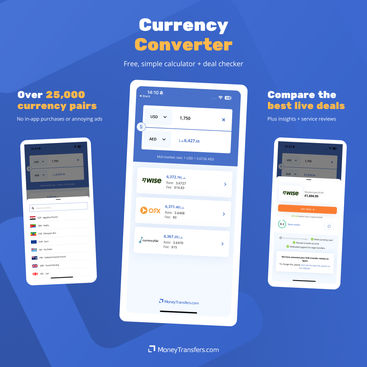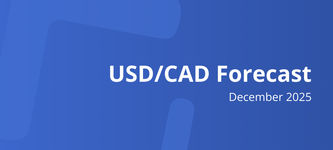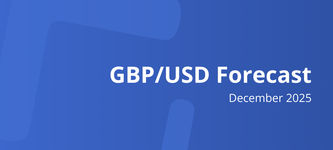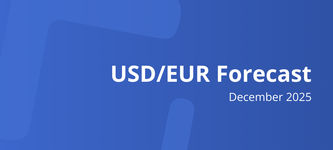USD to PHP Forecast - December 2025
If you're planning to send U.S. dollars to the Philippines this month, here’s a clear breakdown of what’s happening with the exchange rate in December 2025 and what it could mean for your wallet.
USD/PHP is currently trading at 58.917503.
Search Now & Save On Your Transfer
What is likely to happen to USD/PHP in December 2025
The peso remains weak, and the USD is still strong. A Federal Reserve rate cut could offer mild peso relief, but overall risks still lean toward a firm USD. If you are sending dollars to the Philippines, the next few weeks likely remain favorable.
USD to PHP: Where It Stands
The peso has recently been trading close to 58.80 to 59.00 per dollar, showing continued weakness. Broad global strength in the US dollar and soft Philippine fundamentals have kept the peso under pressure. Markets are watching for a possible Federal Reserve interest rate cut in December, which could provide short term relief for Asian currencies including the peso.
What’s Driving USD to PHP?
Key forces influencing the exchange rate right now.
Strong US dollar. Global investors continue to favor the US because of higher yields and safer market conditions. This keeps the USD strong against many Asian currencies including the peso.
Weak Philippine external balances. Analysts note that the Philippines is facing a weaker current account and some fiscal concerns, making the peso more vulnerable.
Interest rate expectations. The Federal Reserve is likely to cut rates in December. This could narrow the interest rate gap between the US and the Philippines, which may ease pressure on the peso.
Regional trends. Many Asian currencies are under pressure, not just the peso. This broad weakness supports USD strength across the region.
What Do the Charts Say?
A simple look at market patterns.
Support level: around 58.50. If USD to PHP dips, buyers often appear around this area.
Resistance level: 59.20 to 59.40. The pair has struggled to move above this range.
Trend: The short term trend is still slightly upward for USD to PHP, meaning mild peso weakness. But momentum is slowing as the market waits for the Fed’s decision.
What to Watch in December 2025
Important events that could move the exchange rate.
US Fed rate cut decision in December. A confirmed cut would likely soften the USD and could help the peso strengthen slightly.
Philippine inflation data. Higher inflation could weaken the peso further by creating pressure on the central bank to keep rates high.
Capital flows. Foreign investor sentiment toward Asia will matter, especially if global markets become more risk averse.
Risks Ahead
Possible surprises that could shift the outlook.
If the Fed delays or reduces the size of the rate cut, the USD may strengthen again.
If Philippine fiscal risks worsen, investors may avoid peso assets.
If global risk sentiment declines, emerging market currencies including PHP could weaken sharply.
What This Means If You’re Sending USD to PHP Abroad
If you are sending US dollars to the Philippines, the current peso weakness means your dollars convert into more pesos than usual.
Rates near 59 are historically high, making this a favorable time for USD senders.
However, if the Federal Reserve cuts rates next month, the peso might strengthen slightly, meaning you could get a bit fewer pesos for the same dollars.
If you want the best value, transferring sooner rather than later may offer better rates.
Live USD to PHP exchange rates
Converting USD to PHP
If you are planning to send USD to the Philippines, you need to pick the right money transfer company to get the most PHP on the other end.
Depending on your needs, it's best to use one of the following companies in December:




History of the USD/PHP pair
The US and the Philippines have a long economic and social relationship.
After going through a major war between 1899 and 1902, the two countries maintained a cordial relationship over the years and do trade worth billions of dollars.
According to the Trade Department, the Philippines is the 31st goods trading partner of the US, with a total volume being over $18 billion.
The USD/PHP cross is classified as a minor pair since the Philippines is not classified as a developed country.
The USD to PHP pair has been traded for many years; however, the Philippine Peso became a free-floating currency in 1993.
At the time, the USD/PHP exchange rate was trading at 26.46. The pair has been on an upward trajectory since then and reached a high of 55.9 in 2023.
In other words, the Philippine Peso has crashed by over 100% since 1993 as the dollar dominance has gained.
Between its lowest and highest points, the pair has jumped by 151%.
As shown above, the Philippine Peso had a strong run between 2005 and 2008, at the time of the Global Financial Crisis (GFC) and the USD/PHP pair crashed to ~40.
Since then, the pair has done well and has risen by over 46%.
This happened because many investors and businesses moved to the US dollar and other foreign currencies like the euro and Swiss franc.
It then jumped during the Covid-19 pandemic as jitters spread in the emerging market and the Philippines economy plunged to $361.75 billion.
The economy expanded to $394 billion in 2022 and is expected to remain stable.
| Date | 1 US Dollar in PHP |
|---|---|
| Dec 21, 2025 | 58.571025 PHP |
| Dec 22, 2025 | 58.787014 PHP |
| Dec 23, 2025 | 58.748012 PHP |
| Dec 24, 2025 | 58.787495 PHP |
| Dec 25, 2025 | 58.785986 PHP |
| Dec 26, 2025 | 58.710375 PHP |
| Dec 27, 2025 | 58.710375 PHP |
| Dec 28, 2025 | 58.709913 PHP |
| Dec 29, 2025 | 58.845997 PHP |
| Dec 30, 2025 | 58.917503 PHP |

Our handy, modern currency app lets you:
Instantly convert 25,000+ currency pairs
Compare live transfer deals
Get reviews & insights
Our app is free for mobiles and tablets, with no intrusive ads or in-app purchases.
Related Content




Contributors





